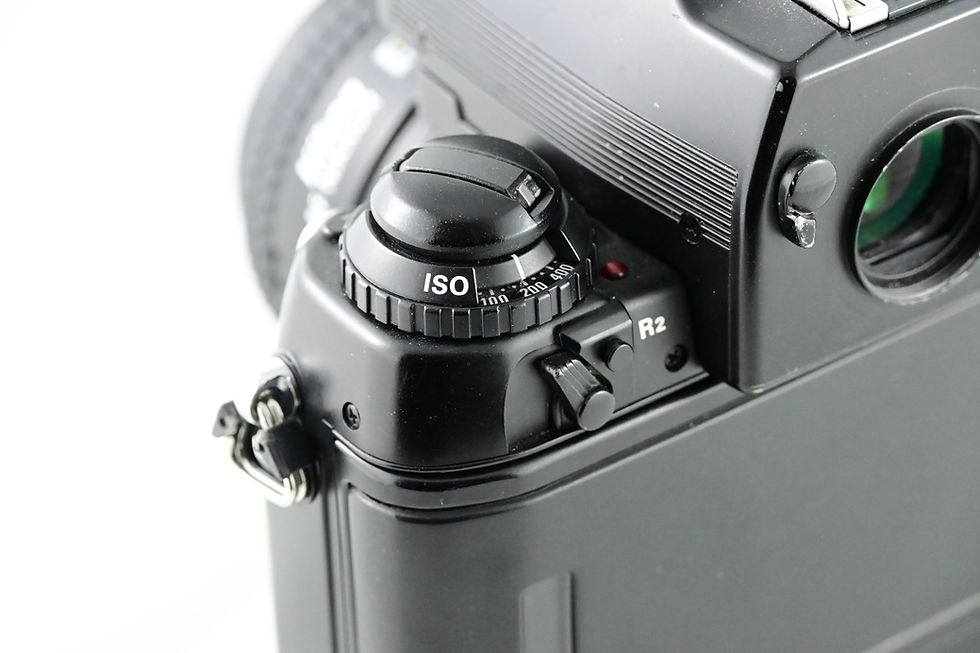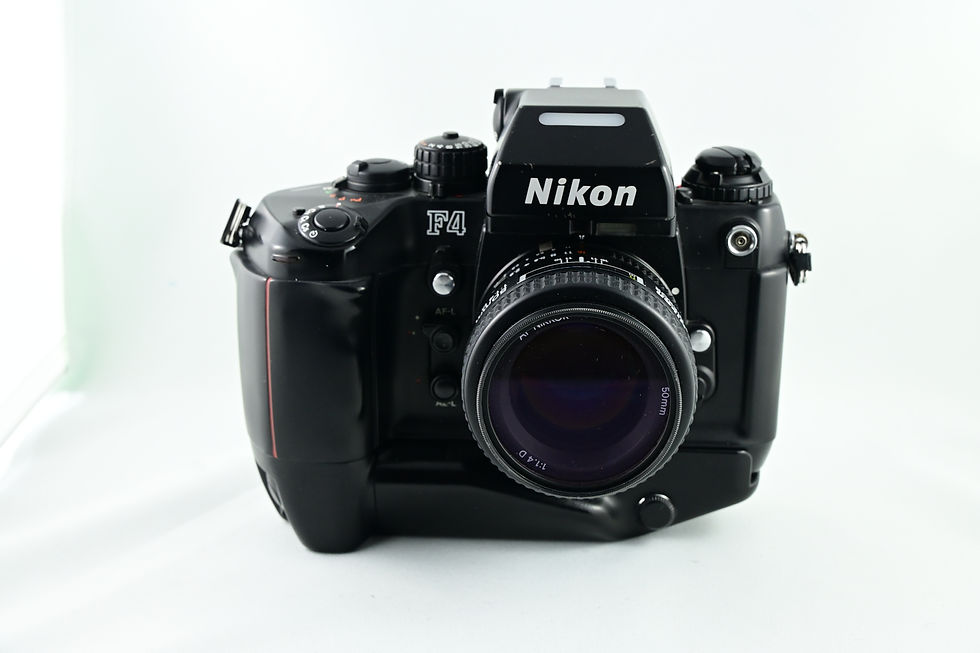Nikon F4
- hometecheasy
- Aug 19
- 3 min read
Updated: Aug 26

The Nikon F4 is a groundbreaking 35mm single-lens reflex (SLR) camera introduced by Nikon Corporation in 1988. It marked a significant evolution in Nikon's professional camera lineup, combining advanced autofocus technology with the ruggedness and versatility that professionals demanded. The F4 was designed to bridge the gap between traditional film cameras and the emerging era of electronic and autofocus systems. Here’s a detailed look at the Nikon F4:
Historical Context
The Nikon F4 was released in 1988 as the successor to the Nikon F3, which had been in production since 1980.
It was Nikon's first professional autofocus SLR, representing a major shift in the company's approach to camera design.
The F4 was designed by Giorgetto Giugiaro, the same Italian designer who styled the Nikon F3, giving it a modern and ergonomic design.
It was widely used by professional photographers, including photojournalists and sports photographers, and became a symbol of Nikon's commitment to innovation.


Key Features
Autofocus System:
The F4 featured an advanced autofocus (AF) system, making it Nikon's first professional AF camera.
It used a TTL phase-detection autofocus module, which was fast and accurate for its time.
The AF system was compatible with Nikon's AF Nikkor lenses, though it could also use older manual-focus AI and AI-S lenses.

Exposure Modes:
The F4 offered four exposure modes:
Programmed Auto (P): The camera selected both aperture and shutter speed.
Shutter-Priority Auto (S): The photographer selected the shutter speed, and the camera set the aperture.
Aperture-Priority Auto (A): The photographer selected the aperture, and the camera set the shutter speed.
Manual (M): The photographer controlled both aperture and shutter speed.
Metering System:
The F4 featured a multi-segment matrix metering system, which analyzed light across the frame for more accurate exposures.
It also offered center-weighted metering and spot metering for precise control.
Build Quality:
The F4 was built to withstand heavy use, with a robust metal body and weather sealing.
It was designed to operate in extreme conditions, making it a favorite among photojournalists and adventure photographers.
Viewfinder:
The F4 featured a fixed prism viewfinder with 100% frame coverage and a 0.7x magnification.
The viewfinder displayed extensive information, including shutter speed, aperture, exposure mode, and focus confirmation.
Motor Drive:
The F4 had a built-in motor drive capable of continuous shooting at up to 5.7 frames per second.
It also supported the MB-20 and MB-21 battery grips, which improved handling and extended battery life.

Lens Compatibility:
The F4 used the Nikon F-mount, making it compatible with a wide range of lenses:
AF Nikkor lenses: Fully supported autofocus and metering.
AI and AI-S lenses: Supported manual focus and metering.
Non-AI lenses: Could be used in stop-down metering mode.
Film Advance and Rewind:
The F4 featured a rapid-wind lever for manual film advance and an automatic rewind function at the end of the roll.

Notable Variants
The Nikon F4 was produced in several variants, each catering to specific needs:
Nikon F4 (Standard Model):
The base model with a standard prism viewfinder and MB-20 battery grip.
Nikon F4S:
Included the MB-21 battery grip, which held six AA batteries for extended shooting.
Nikon F4E:
Featured the MB-23 battery grip, which used an MN-20 NiMH battery pack for even longer battery life.
Nikon F4P:
A specialized version for press photographers, featuring improved weather sealing and a modified film advance lever.

Why the Nikon F4 is Special
Innovation: The F4 was Nikon's first professional autofocus SLR, combining cutting-edge technology with traditional craftsmanship.
Versatility: It supported a wide range of lenses and accessories, making it highly adaptable to different shooting needs.
Durability: The F4 was built to withstand heavy use, making it a favorite among professionals in demanding environments.



Comments